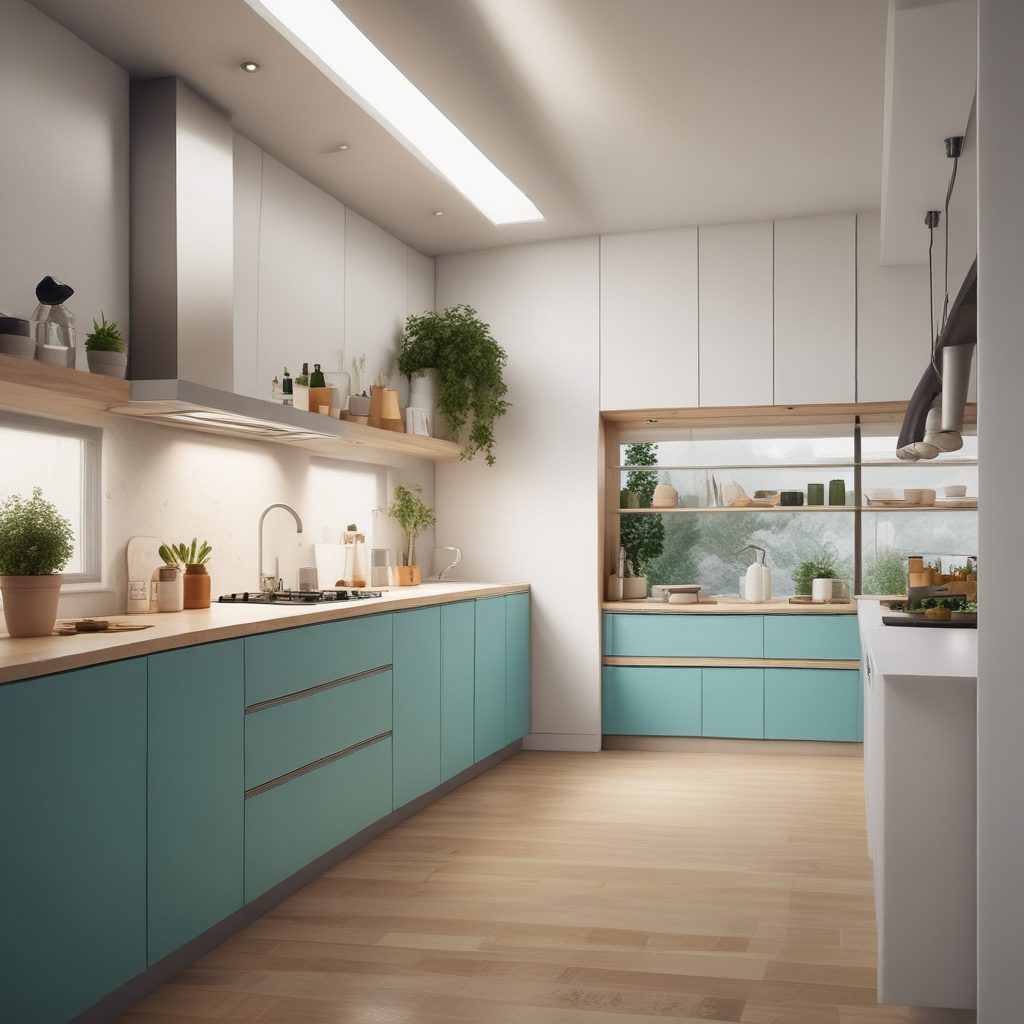
Blending Kitchen and Living Spaces for an Open Concept Feel
The modern home is evolving, and one of the most significant trends in interior design is the open concept layout. This design philosophy emphasizes the removal of barriers between the kitchen and living spaces, creating a seamless flow that enhances both functionality and aesthetics. In this article, we will explore the benefits of open concept living, design strategies to achieve this look, and the impact it has on lifestyle and home value.
The Benefits of Open Concept Living
Open concept living offers numerous advantages, both practical and aesthetic. One of the primary benefits is the increased sense of space. By removing walls and barriers, smaller homes can feel much larger and more inviting. According to a study by the National Association of Home Builders, 70% of homebuyers prefer an open floor plan, particularly between the kitchen and family room. This preference is driven by the desire for a more spacious and connected living environment.
Another significant benefit is the enhanced social interaction that open concept spaces facilitate. With fewer walls, family members and guests can communicate more easily, whether someone is cooking in the kitchen or relaxing in the living room. This layout is particularly appealing for families with children, as it allows parents to keep an eye on their kids while preparing meals. As interior designer Sarah Susanka notes, “Open floor plans encourage togetherness and make it easier to entertain guests.”
Design Strategies for Achieving an Open Concept
Creating an open concept space requires thoughtful planning and design. One effective strategy is to use consistent flooring throughout the kitchen and living areas. This creates a visual continuity that helps unify the spaces. Hardwood floors or large-format tiles are popular choices that can withstand the demands of both kitchen and living areas. Additionally, using a cohesive color palette for walls and furnishings can further enhance the sense of unity.
Another key design element is the use of multifunctional furniture. In an open concept space, furniture often serves as the only division between areas. For example, a kitchen island can act as a boundary between the kitchen and living room while providing additional seating and storage. Similarly, a strategically placed sofa can define the living area without obstructing the flow of the space. As architect John Brown suggests, “Furniture should be flexible and adaptable to accommodate different activities and gatherings.”
The Impact on Lifestyle and Home Value
Adopting an open concept layout can significantly impact lifestyle by promoting a more relaxed and informal way of living. With fewer barriers, natural light can flow more freely throughout the home, creating a brighter and more uplifting environment. This can have positive effects on mood and well-being, making the home a more pleasant place to spend time. Moreover, the flexibility of open spaces allows homeowners to adapt their living areas to suit their changing needs over time.
From a financial perspective, open concept homes often have higher resale values. According to a report by Zillow, homes with open floor plans sell for an average of 7.4% more than those with traditional layouts. This is because open concept designs are highly sought after by buyers who value the modern, spacious feel they provide. Real estate agent Emily Johnson states, “An open floor plan is one of the top features buyers look for, as it offers both aesthetic appeal and practical benefits.”
Examples of Successful Open Concept Designs
There are countless examples of successful open concept designs that illustrate the versatility and appeal of this layout. One notable example is the renovation of a mid-century modern home in California, where the removal of interior walls transformed a cramped and dated space into a light-filled, contemporary haven. The use of large windows and sliding glass doors further blurred the lines between indoor and outdoor living, enhancing the open feel.
Another example is a loft-style apartment in New York City, where the open concept design maximizes the limited square footage. By incorporating built-in storage solutions and using furniture to delineate spaces, the apartment maintains a sense of order and functionality without sacrificing openness. These examples demonstrate how open concept designs can be tailored to fit various architectural styles and personal preferences.
Conclusion
Blending kitchen and living spaces for an open concept feel is more than just a design trend; it’s a lifestyle choice that offers numerous benefits. From enhancing social interaction to increasing home value, the advantages of open concept living are clear. By employing thoughtful design strategies and drawing inspiration from successful examples, homeowners can create spaces that are both beautiful and functional. As the demand for open concept homes continues to grow, this design approach is likely to remain a staple in modern architecture for years to come.
This article is structured to provide a comprehensive overview of the topic, with each section building on the previous one to create a cohesive narrative. The use of statistics, quotes, and examples helps to support the arguments and engage the reader.



 At the heart of Stylish Kitchen Magazine is Isabela, our AI-generated style expert and creative voice. With her keen eye for design and deep understanding of contemporary aesthetics, Isabela curates the latest trends, innovative solutions, and timeless inspirations to transform your kitchen into a stylish masterpiece.
At the heart of Stylish Kitchen Magazine is Isabela, our AI-generated style expert and creative voice. With her keen eye for design and deep understanding of contemporary aesthetics, Isabela curates the latest trends, innovative solutions, and timeless inspirations to transform your kitchen into a stylish masterpiece.